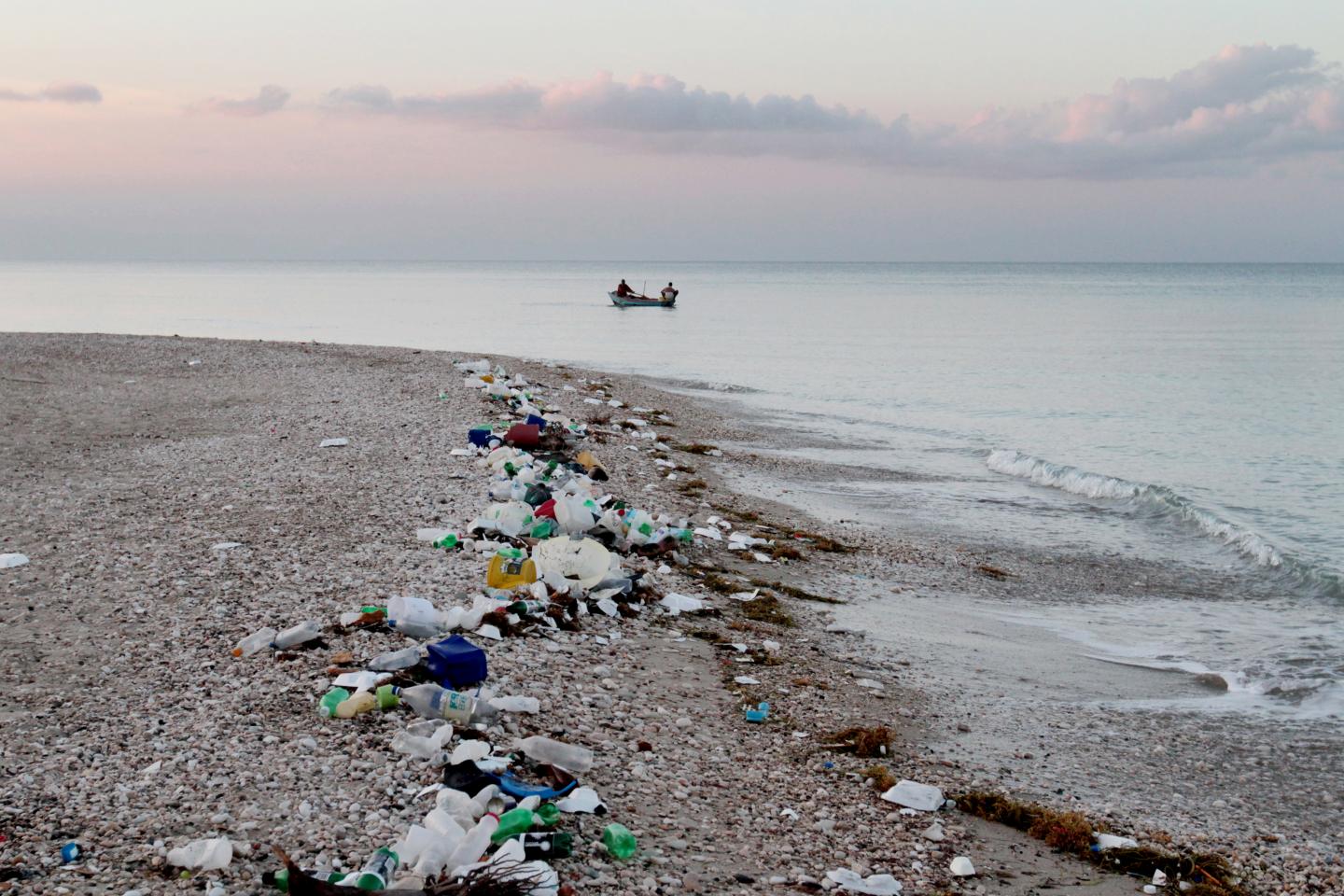About 8 million tons of plastic waste wound up in the world's oceans in 2010, and researchers warn that the cumulative amount could increase more than tenfold in the next decade unless the international community improves its waste management practices.
Jenna Jambeck from the University of Georgia in Athens, GA, along with colleagues from the United States and Australia, studied the sources of ocean-bound plastic around the world and developed models to estimate their annual contributions. They suggest that coastal countries generated close to 275 million tons of plastic waste in 2010--and that 4.8 to 12.7 million tons of that plastic made its way to the oceans.
Until now, researchers had not had a firm grasp of the amount of plastic that makes its way from land to sea each year. But this new study does that and more: It identifies the major sources of ocean-bound plastic and lists the 20 countries--from China to the United States--that contribute the most.

Marine debris and plastic pollution are shown along the coastline of Haiti. Credit: Timothy Townsend
These findings are published in the 13 February issue of Science, and the researchers will be discussing their results during a press briefing and live-streaming webcast at the AAAS Annual Meeting in San Jose, CA, at 9:00 a.m. U.S. Pacific Standard Time on Thursday, 12 February.
"Our estimate of 8 million metric tons going into the oceans in 2010 is equivalent to five grocery bags filled with plastic for every foot of coastline in the world," said Jambeck. "This annual input increases each year, so our estimate for 2015 is about 9.1 million metric tons."
"In 2025, the annual input would be about twice the 2010 input, or 10 bags full of plastic per foot of coastline," she continued. "So the cumulative input by 2025 would equal 155 million metric tons."
The researchers combined data on solid waste from 192 different coastal countries with factors such as population density and economic status. They found that uncaptured waste--trash that is littered or lost from waste management systems--was the biggest source of ocean-bound plastic debris in the world.
"Our mismanaged waste is a function of both inadequate management--open dumping, for example--and litter," explained Jambeck. "This mismanaged waste goes uncaptured, meaning that it then becomes available to enter marine environments."
According to the researchers' models, a country's population size and the quality of its waste management systems largely determine the amount of such mismanaged waste that it generates. In order to prevent the amount of plastic debris that reaches the oceans from increasing by a full order of magnitude over the next decade, Jambeck and her colleagues suggest that nations around the world need to reduce their overall waste and adopt better management strategies.
"We need to make sure that we are collecting and capturing solid waste and plastic around the world," emphasized Jambeck. "Second to this is what we do with it... If we at least capture it, it's not going to go into the oceans."
"Solutions will require a combination of local and global efforts," she explained. "They need to be culturally appropriate and sensitive to social and economic concerns. But a shift in how we manage waste could provide jobs and opportunities for economic innovation--and it could improve the living conditions and health of millions of people."
The Report by Jambeck et al. was supported by the Ocean Conservancy.




Comments